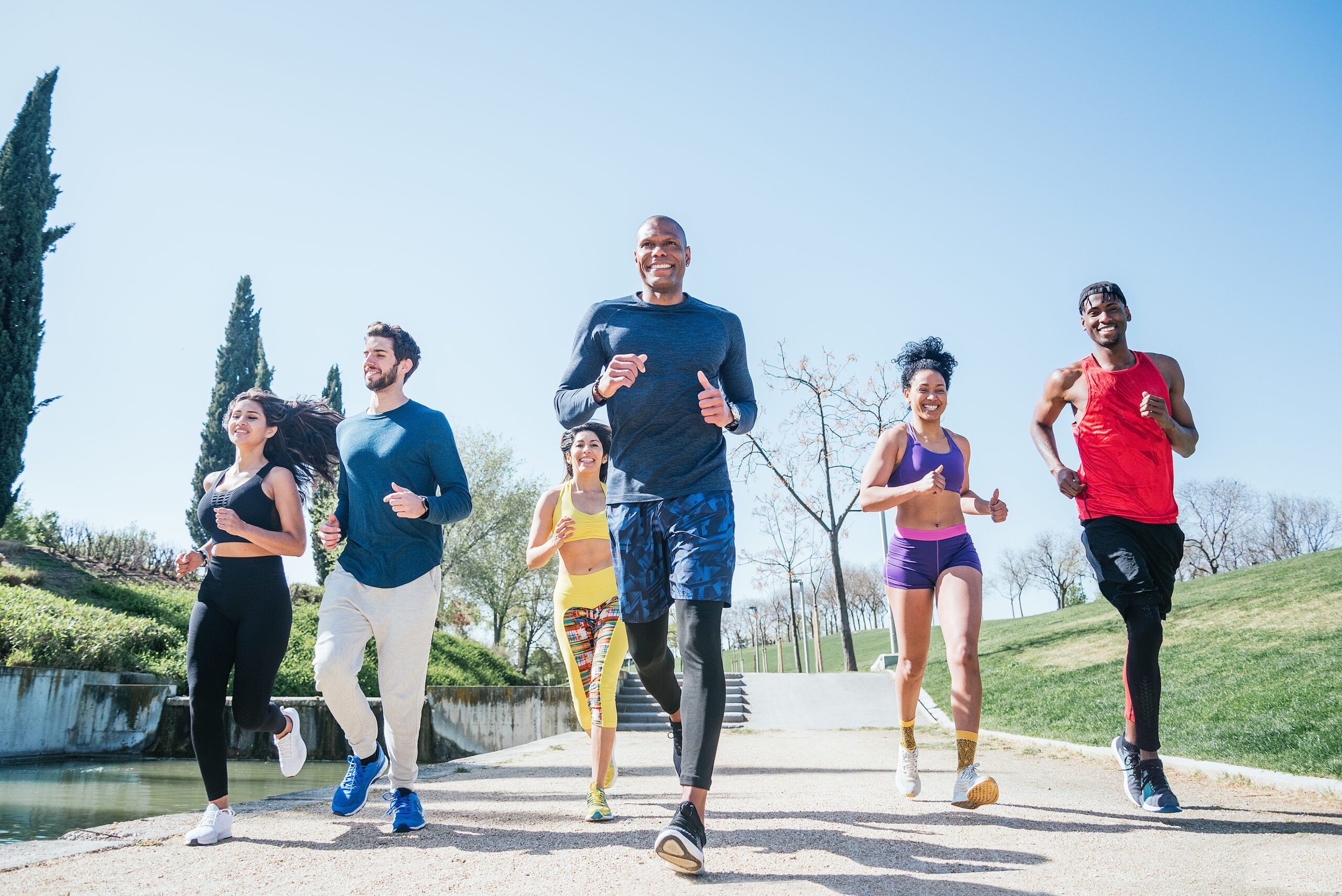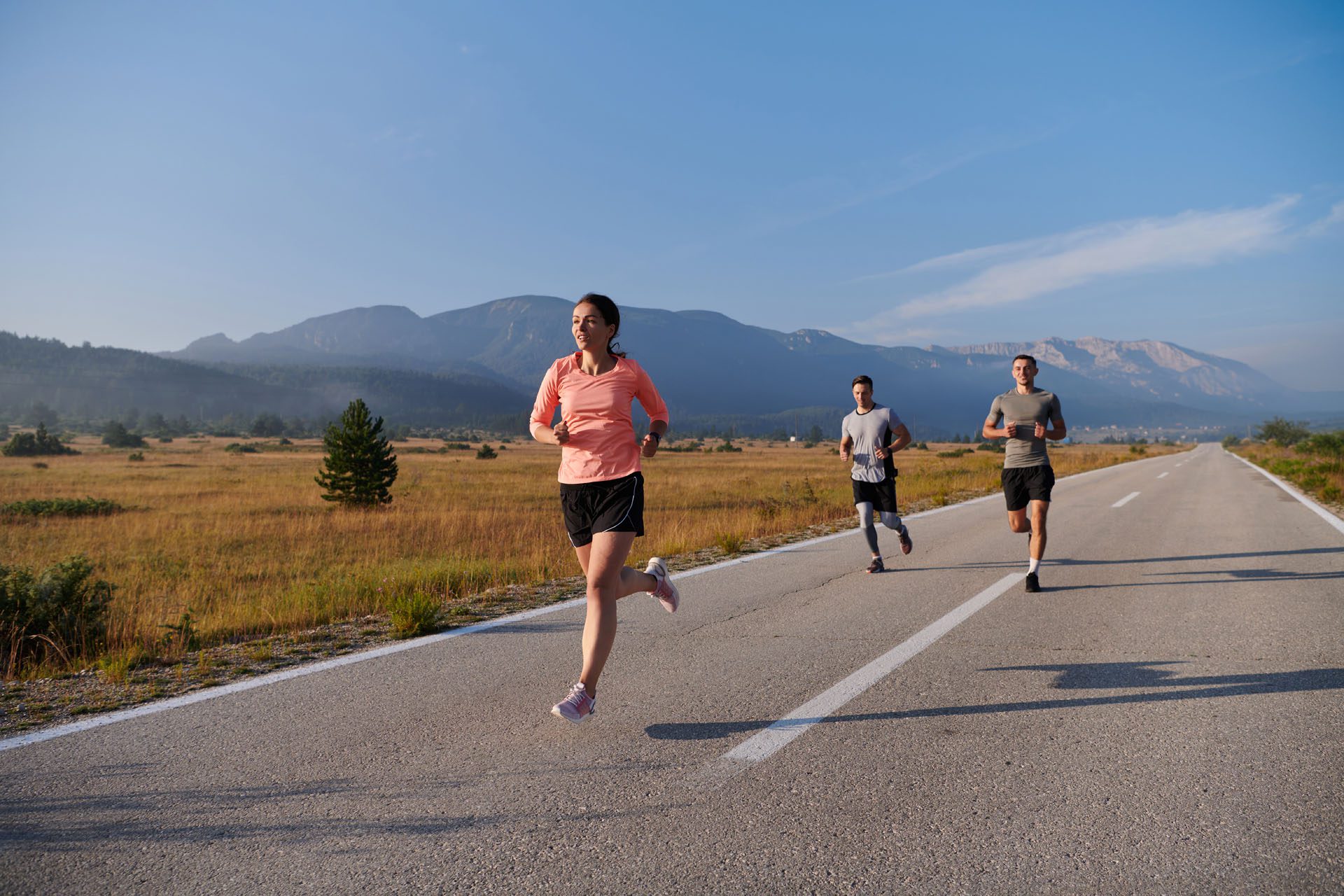Runners Overview on Chiropractic Care & Strength Exercises
Find effective strength exercises and chiropractic care that runners should integrate to boost strength and reduce injury risks.
Running Strong: How Chiropractic Care and Strength Training Transform Runners’ Health and Performance
Introduction
Runners everywhere are always looking for the next big thing, whether it’s beating their 5k time, finally finishing that marathon, or (let’s be honest) just getting up the stairs without hurting themselves. The constant pounding of the pavement takes a toll. Chiropractic care and strength training come into play. They promise not only fewer aches and faster recoveries, but also that you will be able to run stronger, longer, and better.
This in-depth article, which is based on clinical insights from Dr. Alexander Jimenez, DC, APRN, FNP-BC, and recent scientific research, will show you how combining chiropractic care with targeted strength exercises can improve the journey of every runner, whether they are just starting out, a weekend warrior, or an ambitious marathoner.
Let’s go over the pros and cons, look at the science, and have a good time while we do it. Finally, there will be a serious note and a disclaimer at the end so that no one misses the important parts.
The Science-Backed Benefits of Running
Running is more than just a sport—it’s a prescription for longevity and wellness. Even running at a slow pace for just 5-10 minutes daily can significantly reduce the risks of cardiovascular diseases and all-cause mortality. Additional benefits include:
- Superior Heart Health: Regular running conditions the heart, improves blood pressure, and boosts HDL (“good”) cholesterol.
- Enhanced Memory and Mental Health: Aerobic exercise like running increases hippocampal volume (a fancy way of saying it boosts your memory engine), reduces stress, and helps fight depression.
- Stronger Bones and Joints: Contrary to old myths, studies show that runners have lower rates of osteoarthritis and back problems than non-runners and even a lower risk of knee arthritis.
- Weight Management and Improved Sleep: Running torches calories, helps manage weight, and promotes healthier sleep patterns.
If you run, you’re literally investing in your happiness, heart, and future joint health. Not bad for an exercise that only requires shoes, a route, and maybe the will to avoid being chased by your neighbor’s dog.
Why Runners Need Strength Training
Runners—especially the stubborn ones—often avoid strength training, fearing bulkiness or “just wanting to run.” Spoiler alert: Strength training actually increases running efficiency, improves stride, builds fatigue-resistant muscles, and fortifies your body against the repetitive stress injuries that plague most runners. Here’s what happens when you add strength exercises:
Enhanced Running Economy and Efficiency
- Better Performance: Strength workouts reduce the “cost” of running by making each stride more efficient, resulting in less energy used at the same (or faster) pace.
- Injury Reduction: Runners who perform total-body strength programs experience fewer overuse injuries and faster recovery times. Core and unilateral (single-leg) exercises improve stability, thereby reducing injury risk.
- Pain Relief and Musculoskeletal Integrity: Resistance training mitigates chronic pain, strengthens joints, and increases tissue integrity—crucial for absorbing shock with every step.
As running experts say: Strong legs (and core) run longer—and with fewer sob-inducing moments after a tough hill repeat.
Essential Strength Exercises for Runners
Dr. Jimenez recommends strength routines focused on functional, compound movements that mimic the demands of running. Below are evidence-based essentials (bonus: you can do many of these with just your own body weight):
1. Squats and Variations
- Why: Build quads, glutes, hamstrings, core, and calves—the main muscles firing in every stride.
- Types: Bodyweight, goblet squat, Bulgarian split squat, and partial (half) squats for heavy lifts.
- How: Stand tall, lower hips as if sitting in a chair, keep knees behind toes, and rise with controlled power.
2. Lunges (Forward, Reverse, Lateral)
- Why: Enhance unilateral (one-leg-at-a-time) stability, glute power, stride alignment, and hip flexibility.
- How: Step forward or back, lower the rear knee to just above the ground, push through the heel to return.
3. Deadlifts (Romanian or Single-Leg)
- Why: Boost strength in the posterior chain (hamstrings, glutes, lower back), mimicking push-off mechanics in running.
- How: With dumbbells or a barbell, hinge at the hips (not lower back), lower weights to mid-shin, and return.
4. Step-Ups and Box Jumps
- Why: Improve plyometric power, balance, and neuromuscular coordination critical for every running stride and hill climb.
5. Planks and Core Work
- Why: Strengthen the trunk “bridge” (abdominals, obliques, back), maintain running form, and reduce energy leak.
- How: Front and side planks, Superman, bicycle crunches.
6. Calf Raises and Glute Bridges
- Why: Protect against Achilles, calf, and plantar injuries by making the lower legs and glutes more resilient.
Sample Strength Routine for Runners
Complete twice per week alongside running:
| Exercise | Sets | Reps |
|---|---|---|
| Squats | 3 | 10-12 |
| Bulgarian Split Squat | 3 | 8-10/leg |
| Romanian Deadlift | 3 | 10 |
| Lateral Lunges | 3 | 8/side |
| Plank | 3 | 30-60s |
| Calf Raises | 3 | 15-20 |
| Glute Bridge | 3 | 12 |
Always warm up and focus on quality over quantity—good form is your best injury shield.
Chiropractic Care for Leg Instability-Video
How Strength Training Supports the Musculoskeletal System and Reduces Pain
- Joint Stability: Strengthening the muscles around joints provides stability, reduces abnormal movement, and lowers injury risk—especially critical in knees and hips.
- Pain Reduction: Resistance exercises increase support for painful areas (e.g., knee osteoarthritis, IT band syndrome), decrease inflammation, and support healthy joint mechanics.
- Improved Recovery: Stronger tissues repair faster after microtrauma from running, leading to less soreness and more running days.
- Boosted Functional Performance: Increased muscle balance helps correct bad running patterns that lead to “runner’s knee,” shin splints, and more.
In other words: Strength training doesn’t just add “umph” to each stride—it gives your muscles the bouncer’s job at the pain club.
Clinical Insights: The Role of Chiropractic Care
Chiropractic Care for Runners—What Does the Science Say?
Chiropractic care, as emphasized by Dr. Jimenez, is much more than “back cracking.” It’s about aligning the spine and musculoskeletal system to optimize how the body moves, absorbs impact, and heals after stress. Here’s how it helps runners:
- Alignment and Biomechanics: Adjustments restore spinal and pelvic alignment, leading to improved running stride, joint function, and overall efficiency.
- Injury Prevention and Rehabilitation: Regular care prevents overuse injuries, speeds recovery from soft tissue damage, and helps runners bounce back from setbacks quickly.
- Pain Relief: Reduces pain from nerve irritation and muscle tightness (think nagging back, knee, or IT band pain).
- Nervous System Enhancement: Chiropractic care optimizes the nervous system, enhancing reflexes, muscle activation, and coordination for peak running performance.
Diagnostic Excellence: Clinical Insights from Dr. Alexander Jimenez
Dr. Jimenez integrates the latest in advanced imaging (MRI, CT, ultrasound) with in-depth clinical evaluations to create a full picture of a runner’s injuries or biomechanical faults. This comprehensive approach includes:
- Dual-Scope Procedures: Merging chiropractic assessments with medical diagnostics and, when indicated, minor procedures (like combining endoscopy with arthroscopy for joint evaluation).
- Root Cause Focus: Uncovering the reason for pain—not just treating the symptoms—whether it’s a hidden ligament injury, an inflamed tendon, or faulty running mechanics.
- Personalized Rehab Plans: Customizing strength, mobility, and flexibility protocols (using resources like the Living Matrix and functional assessments) that address unique musculoskeletal needs for each runner.
In Dr. Jimenez’s clinic, even your hip flexors are invited to the diagnostic party—no muscle left unexamined, no pain left undiagnosed!
Integrative Chiropractic Care: The Big Picture
Dr. Jimenez’s approach in El Paso blends traditional chiropractic adjustments with functional medicine, acupuncture, advanced imaging, and sports rehabilitation. This leads to:
- Non-Invasive Pain Solutions: Avoiding unnecessary surgery or overreliance on medication.
- Collaborative Care: Working with physical therapists, orthopedic surgeons, and nutritionists—in case your glutes need a support group.
- Lifestyle Optimization: Emphasizing sleep, nutrition, mindset, and stress management as components of optimal running health.
Humor Break: Because Laughter Is the Best Non-NSAID Medicine
- Why don’t runners ever get lost? Because they always follow their sole.
- Why did the runner go to the chiropractor? To get “back” on track! (And improve their stride, too.)
- What’s a runner’s favorite exercise? The plank—because it’s the only time they don’t have to move anywhere.
(Groans aside, if you’re still reading, remember: strong muscles and aligned spines don’t just make you a better runner—they make you a happier one.)
Conclusion: Taking Running Seriously
Two of the best things you can do to live longer and run better are strength training and chiropractic adjustments. Dr. Alexander Jimenez and other specialists can help runners avoid injuries, speed up their recovery, and reach their full athletic potential thanks to their clinical knowledge and cutting-edge diagnostic tools. Strength training not only makes you stronger and faster, but it also keeps you moving for the rest of your life, protects your joints, and eases pain.
Please keep in mind that this blog post is only meant to teach. The results may be different for each person. If you’re starting a new exercise or chiropractic program, have pain that won’t go away, or need an injury diagnosed, always see a trained healthcare professional. This information is not a substitute for good medical advice and treatment; it is only an addition. If you take your running and health seriously, you’ll be glad you did later.
References
- Alexander Jimenez, DC, APRN, FNP-BC. (n.d.). Injury Specialists.
- Jimenez, A. (n.d.). 3 Essential Strength Exercises for Runners.
- Alexander Jimenez, DC, APRN, FNP-BC. (n.d.). LinkedIn Profile.
- WebMD. (2023). How Does Running Improve Your Health?
- U.S. National Library of Medicine. (2024). The Effects of Resistance Training on Pain, Strength, and Function
- El Paso Back Clinic. (2025). Integrative Chiropractic Care Benefits in El Paso
- Mayo Clinic. (2023). Strength training: Get stronger, leaner, healthier
- Red Bull. (2025). 10 strength exercises to improve your running
- Men’s Health. (2025). 4 Most Effective Strength Exercises Every Runner Should Be Doing
- Runner’s World. (2025). How to Build a Strength Base in 4 Weeks
- ISSA. (2023). Why Strength Training for Runners Matters
- Professional Radiology El Paso. (2024). Diagnostic Imaging Services
- CNN. (2025). How building strength helps relieve chronic pain
- NIH PMC. (2008). Effect of chiropractic treatment on hip extension and running velocity
- Still I Run. (2025). The Best Leg Day Workout For Runners
- Atlantic Spine Clinic. (2024). How Chiropractic Prevents Injuries in Runners
- Princeton Medicine. (2009). Unraveling the Science of Running Biomechanics



